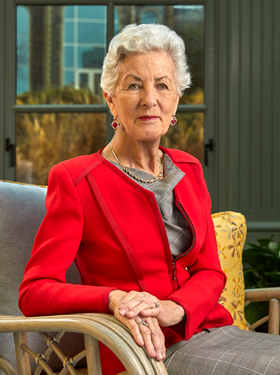What does it mean that my pet’s food is “complete and balanced?”
Most commercial pet foods are formulated to be “complete and balanced," “100% complete” or “scientifically balanced.” All these phrases mean the same thing: the pet food has been formulated to meet a recognized standard of minimum and maximum nutrients that a pet requires at the claimed “life stage” on the pet food package.
The official standard for dog and cat foods in the U.S. is established by the Association of American Feed Control Officials (AAFCO) and the U.S. Food and Drug Administration (FDA) through expert committees composed of veterinarians, companion animal nutritionists from academia, members of the animal food industry and the FDA. The basis for the committees is to review all current and pending nutritional information for specific companion animals. The committees recommend minimum and maximum nutrient levels that should be formulated to ensure a safe and correct diet for each stage of life.
Essential nutrients versus non-essential nutrients in pet foods
There are both essential and non-essential nutrients that animal scientists have identified for the dog and cat, and these vary from 42 to 48 essential nutrients depending on whether we are looking at a kitten or puppy versus a senior cat or dog. Non-essential nutrients are those that the pet can produce within its body from the foods it eats and are not needed on a daily basis.
Essential nutrients are those that the pet needs daily to maintain a healthy life, and these nutrients are specified in the AAFCO Dog and Cat Nutrient Profiles. The sources of these required nutrients come from the ingredients and supplements (vitamins and minerals) that make up the recipe of the selected pet food. These ingredients are required to be listed in a descending order of inclusion amount under a section titled “ingredient listing,” which is usually found on the back or side panel of the pet food package. The names of the ingredients listed follow terms used by the FDA and AAFCO in their regulatory rules and guidelines.
Balanced food depends on age and type of pet
To ensure that a pet food is complete and balanced, it must meet the minimum nutrient levels for the claimed life stage of the pet at the time of feeding. There are several stages of life, each with small changes or additional nutrients that are part of the requirements. For example, since a puppy requires a higher level of protein and energy, fat levels are listed in the label guarantee because fat is an excellent source of energy needed for ensuring proper growth.
Some minerals might be shown in the guarantee because they are important. Calcium and phosphorus are needed for the building of strong bones, but in large breed puppies, excess levels could cause structural problems. Likewise, kittens have a higher protein requirement than puppies and need different levels of vitamins and minerals for their growth compared to an adult cat.
Complete and balanced pet food also means that proper levels of “crude protein” (an animal feed term) are available for the pet, with higher levels required for reproduction, lactation and growth. Protein is made up of many amino acids, which are components of tissues, hormones and other metabolic functions of the body, so AAFCO lists amounts for essential amino acids that must be supplied on a daily basis. Fat is another essential nutrient that is listed as “crude fat”; however, like crude protein, fat has components of essential fatty acids that are required on a daily basis, such as omega-3 and omega-6 fatty acids.
Vitamins and minerals can be found in the individual ingredients. However, due to processing, such as grinding, cooking, drying and storage, some of these vitamins and minerals can change or lose their bioavailability, so fortification of the diet for essential vitamins and some minerals is required. Premium pet foods typically include proteinated trace minerals due to their higher bioavailability.
Like human food, pets need some fiber and carbohydrates in their diets. Even dogs have shown that they need some carbohydrates on a routine basis, and as evolution of the dog has occurred, they have developed genes that allow them to digest carbohydrates. Cats have the ability to handle a moderate level of carbohydrates in their diet quite well.
Fiber plays a significant role in helping pets control the passage rate of their food in their digestive tract. With cats, it helps limit hairball formations. You will see in the AAFCO requirements that crude fiber must be listed on the label in the section titled “Guaranteed Analysis,” which shows the amount of fiber and other carbohydrate fractions found in the diet. Even though AAFCO has not set any minimum or maximum levels on crude fiber in the nutrient profiles, this nutrient, which has many components, such as sugars, ligands and starches, helps maintains the balance of a complete diet.
Next time you are in the pet food aisle, check those labels to ensure your pet’s food is truly complete and balanced.


























